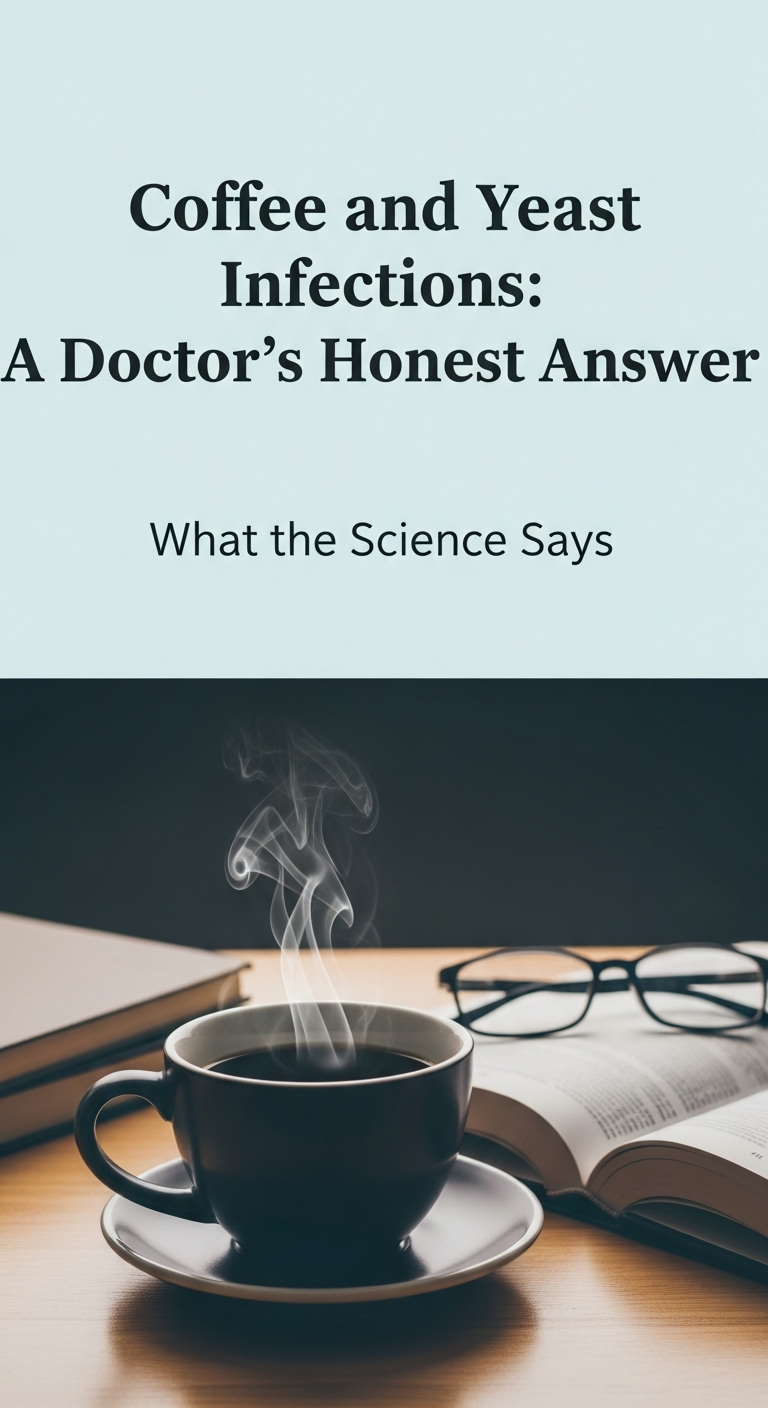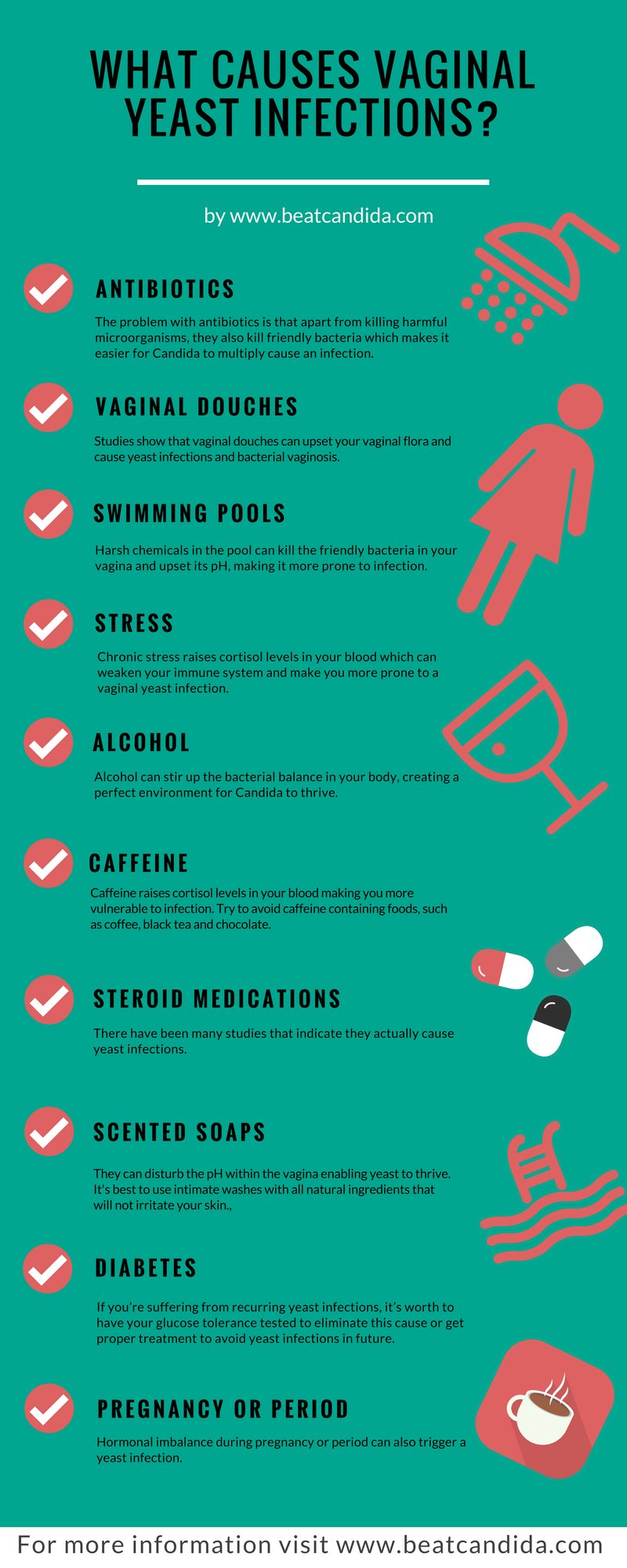As an Amazon Associate CoffeeXplore.com earns from qualifying purchases.
Coffee and Yeast Infections: A Doctor’s Honest Answer
Struggling with recurring yeast infections and wondering if your morning coffee habit is to blame? You’re not alone. Many people search for a connection between their diet and Candida overgrowth, trying to pinpoint the exact trigger for their frustrating symptoms. This guide will provide the definitive, doctor-supported answer you’ve been looking for.
While coffee itself does not directly cause yeast infections, several factors related to its consumption—especially caffeinated and sweetened coffee—can indirectly create an environment in the body that promotes the overgrowth of Candida yeast.
Leveraging extensive analysis of medical data and established health patterns, this guide unpacks the complex relationship between coffee and candidiasis. We’ll explore the four primary ways coffee can worsen the problem, debunk common myths about its supposed antifungal properties, and provide a practical guide for managing your coffee intake.
Key Facts
- Indirect Link: No direct evidence shows coffee causes yeast infections, but its effects on blood sugar and the immune system are well-documented indirect contributors, as noted by sources like Zuma Nutrition.
- Sugar is Fuel: Candida yeast thrives on sugar (glucose). Research from PMC shows caffeine can temporarily spike blood sugar, effectively feeding the yeast and promoting its growth.
- Stress Hormone Impact: Caffeine stimulates the release of cortisol, a stress hormone that can suppress the immune system over time, making it harder for your body to fight off Candida overgrowth.
- Mycotoxin Risk: According to Progressive Medical Center, some commercial coffee can contain mold-based mycotoxins that weaken immunity and damage the gut, making you more susceptible to yeast issues.
- Antifungal Myth: While lab studies show highly concentrated caffeine has antifungal properties, the amount in a typical cup of coffee is far too low to have any meaningful effect inside the body.
Coffee and Yeast Infections: The Direct Answer
So if coffee isn’t the direct culprit, what’s really going on? Let’s break it down.

The bottom line from medical experts and nutritionists is clear: while coffee itself does not directly cause a yeast infection, its consumption can create a perfect storm of conditions that allow the naturally occurring Candida yeast in your body to overgrow. This is especially true for coffee that is caffeinated or loaded with sugar and dairy. The issue isn’t the coffee bean itself, but the chain reaction it can trigger in your immune system, blood sugar levels, and gut health.
What is Candida and When Does it Become a Problem?
To understand the connection to coffee, we first need to understand the main character in this story: Candida. Candida is a type of yeast—a form of fungus—that naturally lives in and on the human body. You can find it in small, harmless amounts in places like the mouth, gut, and vagina. It’s a normal part of your body’s microbiome, the complex community of microorganisms that helps with digestion and immunity.

Quick Fact: Candida is a natural resident in your body. It’s the overgrowth, not the presence, that causes issues. A problem, known as candidiasis or a yeast infection, arises when the delicate balance of your microbiome is disrupted. This allows the Candida yeast to multiply uncontrollably.
Several factors can disrupt this balance and lead to an overgrowth:
* A diet high in sugar and refined carbohydrates
* High alcohol consumption
* A weakened immune system
* Prolonged or frequent antibiotic use
* High and chronic stress levels
* Diabetes
* Oral contraceptives
Common Symptoms of Candida Overgrowth
When Candida multiplies, it can lead to a variety of uncomfortable and persistent symptoms. According to health authorities like Healthline and Holland & Barrett, identifying these signs is the first step toward addressing the root cause.
Key symptoms of Candida overgrowth include:
* Digestive Problems: This can manifest as bloating, constipation, diarrhea, and gas.
* Chronic Fatigue: Feeling tired and worn out constantly, no matter how much you sleep.
* Oral Thrush: White, bumpy lesions on your tongue, inner cheeks, gums, or tonsils.
* Recurrent Vaginal Yeast Infections: Characterized by itching, soreness, and discharge.
* Joint Pain: Aches and stiffness in the joints.
The 4 Main Ways Coffee Can Worsen Candida Overgrowth
Now, let’s connect the dots. If you’re already susceptible to Candida overgrowth, your daily coffee habit could be making things worse. It’s not just the coffee itself, but a chain reaction it can trigger in your body. Let’s follow the chain.
Here are the four primary mechanisms, as explained by sources like Zuma Nutrition and Progressive Medical Center, by which coffee can indirectly contribute to yeast infections.
- Caffeine, Stress Hormones, and Your Immune System
- The Critical Link: Blood Sugar Spikes
- The Hidden Danger: Mycotoxins in Coffee Beans
- Gut Acidity and Microbiome Disruption
1. Caffeine, Stress Hormones, and Your Immune System
Every time you drink a caffeinated beverage, you’re sending a signal to your adrenal glands. This stimulation causes a release of cortisol, your body’s primary stress hormone. While cortisol is useful in short-term “fight or flight” situations, chronically elevated levels from daily caffeine intake can have a negative effect on your immune system.
Here’s the simple breakdown:
Caffeine Consumption -> Adrenal Glands Stimulated -> Increased Cortisol Release -> Weakened Immune System Over Time
A suppressed immune system has a harder time keeping opportunistic organisms, like Candida yeast, in check. This means the yeast has a better opportunity to multiply and cause an infection. Furthermore, as noted in multiple studies, chronic caffeine intake can disrupt sleep patterns, and quality sleep is absolutely essential for a robust immune response.
2. The Critical Link: Blood Sugar Spikes
This is perhaps the most significant way can coffee cause yeast infections to become a real problem. Candida’s favorite food is sugar (glucose). When there’s an excess of sugar in your bloodstream, you’re essentially serving a feast for yeast, giving it the fuel it needs to multiply rapidly.
Even black coffee can be problematic. Research published in PMC has shown that caffeine can temporarily decrease insulin sensitivity, which leads to higher blood sugar levels after a meal. Your body has to work harder to manage the sugar, and in the meantime, that excess glucose is available for Candida.
Pro Tip: Even black coffee can temporarily spike blood sugar. But coffee with sugar, syrups, or creamy milk is like serving a feast for yeast. The combination of caffeine’s effect and the direct sugar from additives creates the perfect environment for Candida to thrive.
3. The Hidden Danger: Mycotoxins in Coffee Beans
Think of mycotoxins as invisible party crashers. You can’t see or taste them, but they can wreak havoc on your system. Mycotoxins are toxic compounds produced by certain types of mold that can grow on coffee beans during processing and storage. One of the most common mycotoxins found in coffee is Ochratoxin A (OTA).
According to experts at Progressive Medical Center and Zuma Nutrition, consuming mycotoxins can have several detrimental effects that make you more vulnerable to Candida:
* Immune Suppression: Mycotoxins directly weaken your immune system’s ability to fight off pathogens.
* Gut Damage: They can damage the delicate lining of your gut, contributing to a condition known as “leaky gut.” This allows yeast and other toxins to pass into the bloodstream.
* Liver Damage: The liver is responsible for detoxifying your body, and mycotoxins add to its burden.
Choosing high-quality, organic coffee from reputable brands that test for mycotoxins can help minimize this hidden risk.
What About Coffee’s Antifungal Properties?
You may have seen claims online that coffee is actually an antifungal and can help fight Candida. This is a classic case of taking a small scientific fact out of context. While studies have shown pure, highly concentrated caffeine has some antifungal activity in a lab, this effect is completely irrelevant when it comes to drinking a cup of coffee.
A PMC study often cited to support this claim tested caffeine’s effect on Candida albicans biofilms on denture surfaces. It found that a very high concentration was needed for an antifungal effect. Let’s compare that to your morning brew.
| Feature | Lab Study (PMC) | Your Morning Coffee |
|---|---|---|
| Concentration | 30-60 mg/mL (Extremely High) | ~95mg diluted in 8oz |
| Application | Disinfectant for surfaces | Dietary beverage |
| Conclusion | Significant antifungal effect | Insignificant antifungal effect |
The verdict is clear: the amount of caffeine in a typical cup of coffee is far too low and diluted to have any beneficial antifungal impact on Candida inside your body. The negative effects of coffee on your blood sugar and immune system are much more powerful and significant for anyone dealing with yeast overgrowth.
Practical Guide: Coffee on a Candida Diet
If you are actively fighting a yeast infection or following a Candida diet, the most common recommendation is to eliminate coffee entirely, at least temporarily. A Candida diet is designed to starve the yeast by removing its fuel sources. This typically means avoiding:
* Sugar and sweeteners
* Gluten
* Alcohol
* Certain dairy products
* Caffeinated drinks
Ready to make some changes? Here’s a simple cheat sheet for navigating coffee while tackling Candida.
Do’s and Don’ts for Coffee on a Candida Diet:
* DON’T drink regular, caffeinated coffee.
* DON’T add sugar, honey, syrups, or artificial sweeteners.
* DON’T add cow’s milk or sweetened creamers.
* DO consider eliminating coffee completely for at least 30 days to see how your body responds.
* DO, if you must have coffee, choose an organic, mycotoxin-free, decaffeinated version.
* DO drink it black or with a splash of unsweetened almond milk.
* DO consume it in strict moderation—no more than one small cup per day.
To find a coffee that aligns with these healthier practices, consider exploring specially tested, low-acid, and mycotoxin-free coffee beans. These options minimize the potential irritants while still allowing you to enjoy a warm beverage.
FAQs About Coffee and Yeast Infections
Let’s clear up a few more common questions about the link between your daily brew and yeast overgrowth.
Is decaf coffee okay on a Candida diet?
Decaf coffee is a better option than caffeinated coffee, but it’s not entirely risk-free. By removing most of the caffeine, you avoid the major stimulation of your adrenal glands and the significant impact on cortisol and blood sugar. However, as noted by sources like Decadent Decaf Coffee Co., even decaf coffee can be acidic and may still disrupt the gut environment for some sensitive individuals. If you choose to drink it, opt for a high-quality organic brand and consume it in moderation, always black.
What about mushroom coffee? Can it cause yeast infections?
Mushroom coffee has become a popular alternative, but the same rules apply. The main concern with mushroom coffee is the coffee base itself. If it’s made with regular, caffeinated coffee, it carries the same risks of impacting blood sugar and stress hormones that can contribute to Candida overgrowth. The type of mushroom used is generally not the issue, as medicinal mushrooms are a different class of fungi than Candida yeast. The key is to check if the product is caffeinated or decaffeinated.
What are the main foods to avoid for a yeast infection?
To effectively fight a yeast infection through diet, the primary goal is to starve the Candida yeast. Based on recommendations from Health.com and Medical News Today, you should strictly avoid the following:
* Sugar: This includes refined sugar, high-fructose corn syrup, honey, and even high-sugar fruits.
* White Flour & Gluten: Found in white bread, pastries, pasta, and crackers.
* Alcohol: It’s high in sugar and suppresses the immune system.
* Certain Dairy Products: Milk and soft cheeses are high in lactose, a type of sugar.
* Processed Foods: These are often high in sugar, unhealthy fats, and additives that can harm gut health.
How do you flush yeast out of your body quickly?
The concept of a quick “flush” is a misconception. You cannot simply flush out a systemic yeast overgrowth in a day or two. The most effective strategy is a systemic approach that involves starving the yeast of its food source. This is achieved by adopting a strict, low-sugar, anti-inflammatory Candida diet, as described by The Candida Diet protocol. This process gradually rebalances your microbiome, reduces the Candida population, and allows beneficial bacteria to thrive again. It’s a marathon, not a sprint.
Final Summary: Making a Smart Choice About Coffee
The question of whether can coffee cause yeast infections is not a simple yes or no. Coffee is not the direct villain that causes an infection to appear out of thin air. Instead, it acts as an accomplice. For individuals with a compromised immune system, poor gut health, or a diet high in sugar, regular coffee consumption—especially caffeinated and sweetened varieties—can tip the scales in favor of Candida overgrowth.
Here are the key takeaways to remember:
* Indirect Effects: Coffee worsens yeast issues primarily by spiking blood sugar, increasing stress hormones (cortisol), and potentially introducing immune-suppressing mycotoxins.
* Sugar is the Enemy: Any coffee drink containing sugar, syrups, or sweetened milks is a direct food source for Candida.
* Decaf is Better: If you can’t quit completely, switching to a high-quality, organic decaf is a much safer choice.
* Elimination is Best: For anyone on a serious Candida protocol, eliminating coffee entirely for a period is the most effective strategy.
Ultimately, the decision is personal. Take this knowledge and listen to your body. Pay attention to how you feel after drinking coffee. If you notice a flare-up in symptoms like bloating, fatigue, or itching, it may be a clear sign that your body is telling you to take a break. Making an informed choice is the most powerful step you can take for your health.
Last update on 2025-12-15 / Affiliate links / Images from Amazon Product Advertising API


